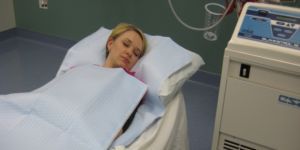Study Offers Guidance on Forced Cooling Following Cardiac Arrest
A new study provides guidance to physicians using therapeutic cooling to treat sudden cardiac arrest, which is the leading cause of death in the United States.

Forced cooling is a new approach to prevent or reduce brain damage following sudden cardiac arrest and involves the use of induced hypothermia. The goal is to slow the body’s metabolism and reduce the cascade of undesirable events that can cause permanent brain damage; it is believed that mild therapeutic hypothermia suppresses harmful chemical reactions in the brain and preserves cell health.
A new study published in Neurology provides guidance to physicians using therapeutic cooling to treat sudden cardiac arrest, which is the leading cause of death in the United States.
“After sudden cardiac arrest, the use of therapeutic hypothermia can make a difference, not only in terms of survival but also allowing more patients to recover without significant brain damage,” senior author Alejandro Rabinstein, MD, a neurologist at the Mayo Clinic, said in a statement.
Although it is a promising treatment, one concern about the use of hypothermia for cardiac arrest patients is that it might delay a patient’s post-event awakening. An evaluation 72 hours after the patient’s collapse is useful in determining their prognosis, especially if the patient is awake.
The researchers, however, found that patients who were and were not treated with therapeutic hypothermia awoke an average of two days post-collapse, with nearly all patients in both groups awakening within three days.
“Our study relieves concerns about delayed awakening associated with hypothermia and supports its use when indicated,” Rabinstein said.
The researchers also reported that:
• The median day of awakening was day two for both hypothermic and non-hypothermic patients.
• Ninety-one percent of hypothermic patients and 79% of non-hypothermic patients awoke within three days following their collapse.
• Overall in-hospital mortality was 53%.
• Sixty-four percent of patients treated with induced hypothermia survived, as compared to just 24% of patients not treated with hypothermia.
Sudden cardiac arrest affects more Americans than breast cancer, prostate cancer, colorectal cancer, AIDS, traffic accidents, house fires, and gunshot wounds combined, according to the Sudden Cardiac Arrest Foundation. Just 7% of all victims survive their collapse, although 50% or more could survive if the proper steps are taken immediately after they go into cardiac arrest.
SourceStudy Offers Cardiac Arrest Treatment Guidance [The Mayo Clinic]